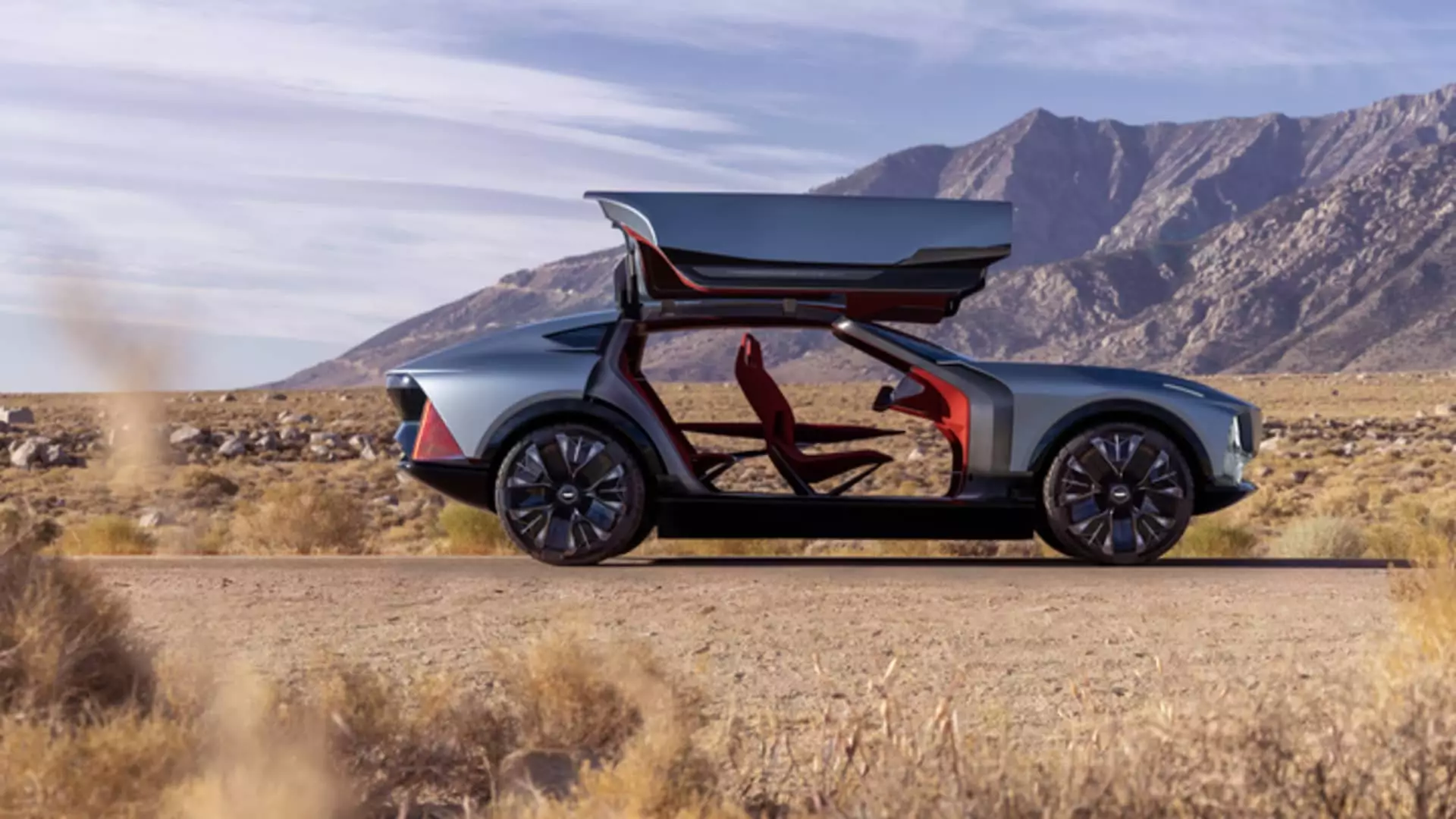Cadillac’s unveiling of the Elevated Velocity concept isn’t merely a showcase of innovation; it’s a bold statement of aspiration tinged with overreach. Positioned at the intersection of luxury and rugged capability, this concept car attempts to redefine what a premium electric vehicle can embody. Yet, beneath its eye-catching design and theatrical features lies a questionable practicality that reveals the inherent contradictions in Cadillac’s current ambitions. The carved-out narrative of an “elevated” luxury that can conquer off-road terrain smacks of marketing bravado more than genuine engineering prowess. Too often, automakers tether their visions to grandiose visions that may never materialize into tangible, consumer-ready products, and Cadillac’s Elevated Velocity seems no different.
Portraying a Dual Identity That Doesn’t Fully Commit
The phrase ‘elevate’ is used as a linguistic smoke screen—signaling both high-end luxury and off-road robustness. While the idea of a crossover that can cruise city streets and conquer mountain trails is appealing on paper, the reality is that these two worlds are often incompatible. The Elevated Velocity’s enormous 24-inch wheels and lifted chassis suggest an off-road intent, yet the vehicle remains a showcar—essentially a high-concept prototype that emphasizes style over substance. It raises the uncomfortable question of whether Cadillac is truly capable of balancing these conflicting priorities or simply riding the wave of trendy “dual-purpose” vehicles to boost brand cachet.
Design Over Substance? A Question of Feasibility
Cadillac’s focus on opulent velocity, as embodied by this concept, hinges heavily on dramatic visual cues rather than proven engineering solutions. The interior features, such as the ‘recovery space’ with breathwork aids and ambient lighting, sound more like a meditative retreat than a practical feature. Similarly, the exterior inspiration from glacier ice is more an aesthetic choice than a meaningful statement about durability or function. Most concerning is the fact that this car remains a concept, a staged showcase with no concrete performance metrics. If Cadillac plans to develop this into a production vehicle, serious questions about weight, battery life, and off-road performance will inevitably surface—areas where the concept’s current design offers little real insight.
Ambitious Branding or Overhyped Hype?
Cadillac’s brand revival relies heavily on the perception of innovation and exclusivity. The company’s recent efforts to become an all-electric brand by 2030 strike a chord with shifting consumer expectations, but announcing a concept that mixes luxury with off-road capabilities risks diluting the brand’s core promise of polished sophistication. While Cadillac’s sales figures indicate a positive trend—boasting its best first half in two decades—there remains a palpable disconnect between the glitz of concept vehicles and the likelihood of their practical realization. The Elevated Velocity might serve as an aspirational tool, but it also risks setting unachievable expectations that could backfire should the reality fall short.
The Underlying Strategy: Luxury as a Profit Magnet
Luxury vehicles continue to be Cadillac’s primary weapon in the competitive EV marketplace. Higher profit margins and a more affluent clientele afford the brand a strategic advantage, especially amid the sluggish adoption rates of electric vehicles in broader markets. Cadillac’s focus on premium features like fragrance-infused cabins, red leather interiors, and high-tech ambient lighting is classic repositioning—an attempt to burnish its luxury image while riding the wave of electrification. However, such features, while attractive, do little to address the fundamental question: will consumers truly gravitate towards a vehicle that promises off-road luxury when the core market for electric SUVs still demands reliability, range, and efficiency?
Final Reflection: A Dream Largely Unfounded
In essence, Cadillac’s Elevated Velocity exemplifies a pattern of ambitious concept cars that hover between visionary and impractical. It is a testament to the brand’s desire to appear innovative and daring in a crowded market, yet it also highlights the risk of overpromising without a clear pathway to fruition. For a center-right, liberal-leaning audience that values pragmatic progress, such a vehicle symbolizes a broader industry issue: the allure of flashy innovation often eclipses core technological and practical considerations. Until Cadillac can prove that such lofty visions translate into feasible, high-quality vehicles, the Elevated Velocity remains nothing more than an elaborate illusion—an appealing but ultimately misleading glimpse into Cadillac’s future.

